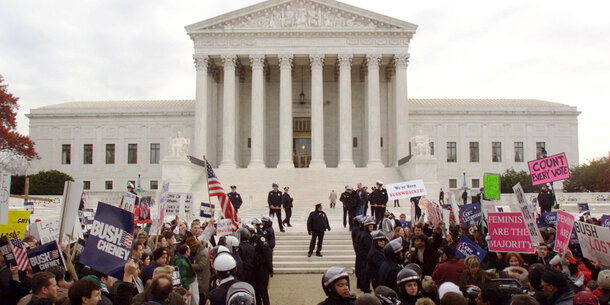The U.S. Constitution’s Fourth Amendment protects people from unreasonable searches and seizures. According to the U.S. Supreme Court, the Amendment’s purpose “is to safeguard the privacy and security of individuals against arbitrary invasions by government officials.” Until the late 1960s, the Supreme Court ruled that Fourth Amendment protections only applied to searches and seizures of tangible property. But in 1967, the Court expanded Fourth Amendment protections, holding in Katz v. U.S. (1967) that “the Fourth Amendment protects people, not places.” Specifically, the government was now prohibited from intruding upon a person’s “reasonable expectation of privacy.” In other words, if an individual seeks to keep something private, and that expectation of privacy is “one that society is prepared to recognize as reasonable,” the Fourth Amendment is triggered, and the government generally must obtain a warrant supported by probable cause before conducting a search. This approach seeks to protect the “privacies of life” from “arbitrary power,” and to “place obstacles in the way of a too permeating police surveillance.”
By contrast, the Court has not required a warrant or other heightened standard for police officers to take pictures of individual license plates and compare them against a law enforcement database. Its reasoning has been twofold. First, due to “the pervasive regulation of vehicles capable of traveling on the public highways,” there is no expectation of privacy in the content of license plates. Second, longstanding precedent holds that drivers on public roads cannot expect their movements to be kept private from the police since they could be observed by any member of the public (though, as discussed below, this presumption is beginning to shift). In keeping with these doctrines, courts have regularly held that law enforcement officers may, at their discretion and without any suspicion of criminal activity, perform at least an initial check of a license plate against a law enforcement database.
Even so, there have long been hints that the tracking of vehicles’ movements could, under some circumstances, trigger Fourth Amendment concerns. As far back as 1979, the Supreme Court declared that “an individual operating or traveling in an automobile does not lose all reasonable expectation of privacy simply because the automobile and its use are subject to government regulation.” Similarly, when the Court analyzed the use of beeper technology in the 1980s, it distinguished limited monitoring from “twenty-four hour surveillance of any citizen in the country,” reserving the question of whether such “dragnet type law enforcement practices” merit the application of different constitutional principles.
More recently, the Court’s application of the Fourth Amendment has evolved significantly in response to technological “innovations in surveillance tools.” In Kyllo v. U.S. (2001), for instance, the Supreme Court held that police need a warrant before they can use a thermal imager to detect heat coming from a garage. By doing so, the Court rejected a return to a “mechanical interpretation” of the Fourth Amendment, under which the Constitution would have protected only against physical intrusions into a person’s private space, holding instead that it was necessary to ensure that people were not left “at the mercy of advancing technology.” Over time, the Court has ruled that law enforcement must obtain a warrant before searching a suspect’s cell phone during an arrest (even though it had previously allowed warrantless searches incident to arrest), before installing a GPS tracker on an automobile for long-term monitoring (despite precedent suggesting that vehicular movements are not private), and before obtaining historical cell-site location information revealing an individual’s daily movements (although third-party information can normally be obtained without a warrant).
The reasoning in these cases is instructive. Take U.S. v. Jones (2012), in which the Supreme Court held that the police need a warrant in order to install a GPS tracking device on a car and use it for extended surveillance. In her concurrence, Justice Sonia Sotomayor observed that inexpensive location tracking “makes available at a relatively low cost such a substantial quantum of intimate information about any person whom the Government, in its unfettered discretion, chooses to track” that it “may ‘alter the relationship between citizen and government in a way that is inimical to democratic society.’” Similar themes run through the Court’s decision in Carpenter v. U.S. (2018), which holds that police must get a warrant before they can obtain historical information from cell phone providers about the location of individuals’ mobile phones (known as cell-site location information, or CSLI). The Court observed that this information could be used to track the minutiae of people’s daily lives. It reasoned that the “depth, breadth, and comprehensive reach” of this data, along with “the inescapable and automatic nature of its collection” by virtue of simply carrying a cell phone, necessitate a warrant supported by probable cause.
While the Carpenter decision narrowly addresses the use of historical CSLI, it provides an important framework for analyzing reasonable expectations of privacy in the digital age. Location tracking via ALPR databases raises many of the same concerns outlined in Carpenter; an application of its framework should lead courts to conclude that police must first obtain a warrant before searching historical location information from ALPR databases.
Specifically, first, Carpenter instructs courts to consider the capacity of a technology to enable ongoing surveillance that would have been unimaginable before the digital age. Just as with CSLI, automatic license plate readers enable data collection that is “detailed, encyclopedic, and effortlessly compiled.” A person’s phone is constantly creating records simply by being powered on and connecting to the network. Similarly, ALPRs automatically collect information about every car that passes within their range. But while a person might turn off their cell phone while they travel, it may be almost impossible to avoid traveling some roads without exposing one’s vehicle to ALPRs.
Second, the Carpenter Court considered the extent to which data collection is indiscriminate, targeting not only people under investigation but a much broader segment of the population. While ALPR scans provide a different level of pinpoint accuracy than CSLI, they also indiscriminately collect data about every car that passes by a license plate reader, regardless of the driver’s connection to criminal activity. In fact, the vast majority of scans capture information about drivers who are not suspected of any wrongdoing. The only limitations on this ongoing surveillance of all cars traveling a public road are the number of ALPRs and the data retention policies maintained by police or third-party vendors.
Third, the Court considered the extent to which the long-term CSLI retention allowed officers to effectively create a time machine of a person’s movements. Just as with historical CSLI, the long-term retention of plate data allows the police to retroactively track every location where a particular car was tagged by an ALPR device. To be sure, the current scope of ALPR devices does not match the scope of cell phone towers blanketing the country, which makes a direct comparison difficult. Nonetheless, the current adoption rate of ALPRs suggests that this technology will continue to expand its coverage areas. In fact, the Carpenter Court ruled that lower courts “must take account of more sophisticated systems that are already in use or in development.” ALPR technology is expanding at a rapid rate, with growing databases containing billions of license plate scans, and with governmental and private ALPR devices capturing larger swaths of cities. Courts should consider this foreseeable future when confronted with nascent uses of ALPR that appear smaller in scale.
Finally, the Court ruled that an interpretation of the Fourth Amendment called the third-party doctrine is inapplicable to historical CSLI. Under the third-party doctrine, individuals do not have a reasonable expectation of privacy in information they are deemed to have voluntarily handed over to third parties. The Carpenter Court found that while this doctrine is appropriate for limited disclosures such as bank records or a log of dialed telephone numbers, it should not apply to CSLI data, which can provide a “chronicle of a person’s physical presence compiled every day, every moment, over several years.” Historical ALPR data similarly chronicles the movements of all vehicles, regardless of the registered owner’s connection to a suspected crime.
The Carpenter Court also reasoned that individuals do not truly voluntarily share their location data with wireless carriers; instead, the data is automatically collected simply by possessing a cell phone — a device the Court described as “indispensable to participation in modern society” — and by connecting to a mobile network. Similarly, a majority of Americans rely on driving in order to fully participate in society, and their movements are logged by ALPRs by virtue of simply driving and parking on public roads. Just as the only way to avoid generating CSLI would be to turn off a mobile device, the only way to avoid ALPR data collection would be to give up driving altogether or to keep a vehicle away from the range of a license plate reader — an impossible task in many places. Carpenter thus suggests that the third-party doctrine is equally inapplicable to historical location data collected by ALPR devices.
Although the Supreme Court has not yet addressed whether police access to historical ALPR data requires a warrant, appeals courts have begun hearing challenges to warrantless ALPR database searches. However, courts appear reluctant to embrace a bright-line rule that extends Carpenter to ALPR searches. The result has been a series of one-off decisions that seek to avoid direct engagement with the foreseeable proliferation of ALPR data.
For example, in U.S. v. Yang (2020), the Ninth Circuit ruled that the defendant did not have standing to challenge government queries of a private ALPR database for records of his rental car travels when he kept the vehicle past the contract due date in violation of company policy. This ruling now compels defendants in the Ninth Circuit to prove that they had a sufficiently close relationship with the property that was searched before the court will address their Fourth Amendment rights.
And in Commonwealth v. McCarthy (2020), the Massachusetts Supreme Judicial Court ruled that while widespread use of ALPR devices can implicate a person’s Fourth Amendment privacy interest in the whole of their movements, the limited surveillance undertaken in that case did not violate the defendant’s reasonable expectation of privacy. The case involved police officers’ use of ALPR hot list notifications to track the defendant’s movements as he traveled across two bridges over the course of two months. The court applied what is commonly referred to as the “mosaic theory,” where the long-term surveillance of a person’s public movements triggers a privacy interest that could be absent with only limited or isolated monitoring. The court acknowledged that “with enough cameras in enough locations, the historic location data from an ALPR system in Massachusetts would invade a reasonable expectation of privacy and constitute a search for constitutional purposes.” Four ALPR devices on two bridges did not, however, rise to this level, according to the ruling. Lower courts will continue to face the dilemma of how to rule on the specific use of ALPRs in a given case while taking into account the Supreme Court’s admonition that courts must consider the logical evolution of these systems of surveillance.
Separate from Fourth Amendment considerations, courts have also considered how ALPR technology may violate privacy protections under state law. For example, the Virginia Supreme Court is currently hearing an appeal seeking to reopen the substantive issue of whether the Fairfax County Police Department’s use of an ALPR system to passively track the movements of cars that were not on a hot list violates the state’s Government Data Collection and Dissemination Practices Act. This act requires, among other things, that information not be collected unless the need for it has been clearly established ahead of its collection — a standard that indiscriminate collection of ALPR data cannot meet. If the trial court’s ruling is upheld, the Fairfax County Police will be required to purge ALPR data that is not linked to a criminal investigation and to stop using ALPRs to passively collect data on people who are not suspected of criminal activity.
ALPRs are relevant to more than privacy. Courts have also considered whether an ALPR hit provides sufficient justification for a police officer to stop a car. In Kansas v. Glover (2020), the Supreme Court ruled that a license plate search indicating that a car’s registered owner has had his or her license revoked gives police reasonable suspicion to perform a traffic stop in the absence of information suggesting that someone other than the owner is driving the vehicle. Several state courts reached the same conclusion.
An ALPR hit is not always a sufficient basis for a stop, however. In 2014, the U.S. Court of Appeals for the Ninth Circuit considered an erroneous ALPR alert that led to a traffic stop in which a woman was detained and held at gunpoint. Unlike in Glover, where an officer manually searched a license plate number and confirmed that the truck he observed matched the vehicle in the database, in Green v. City and County of San Francisco (2014), an ALPR device mounted on an officer’s cruiser malfunctioned and returned a hit for a different vehicle and license plate number than the plaintiff’s car. An officer radioed in a description of the plaintiff’s vehicle, along with the incorrect license plate number picked up by the ALPR device. A second officer identified the plaintiff’s car, but did not attempt to confirm whether the radioed license plate number matched the plates on the plaintiff’s car. The Ninth Circuit ruled that the case could proceed on the question of whether the second officer should have taken additional steps to independently confirm whether the ALPR device had identified the right car and license plate number before initiating a traffic stop. The Green decision, which analyzed an ALPR system that “frequently” makes mistakes, may suggest that there are situations in which reliance on an ALPR hit remains insufficient to justify a traffic stop.




